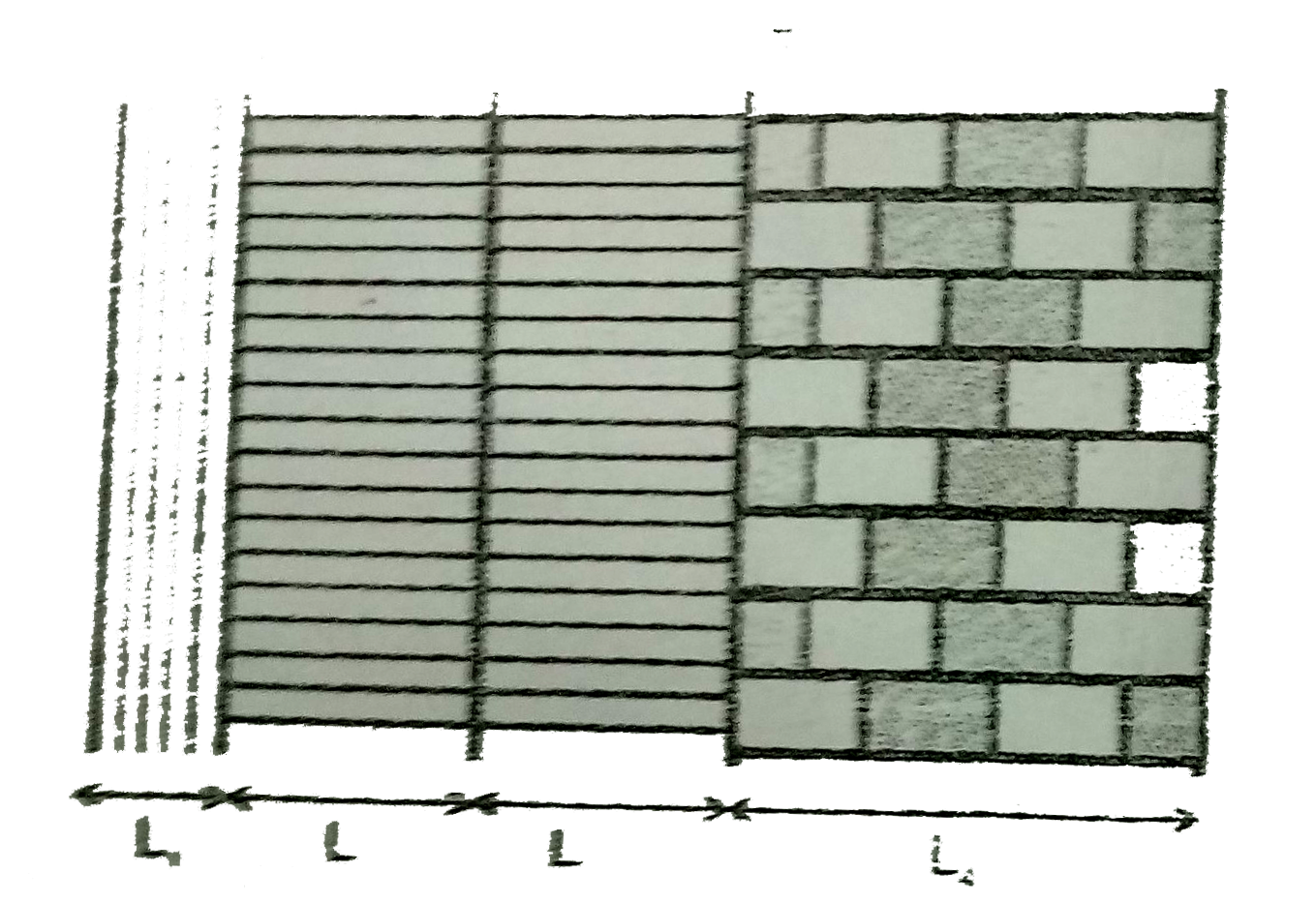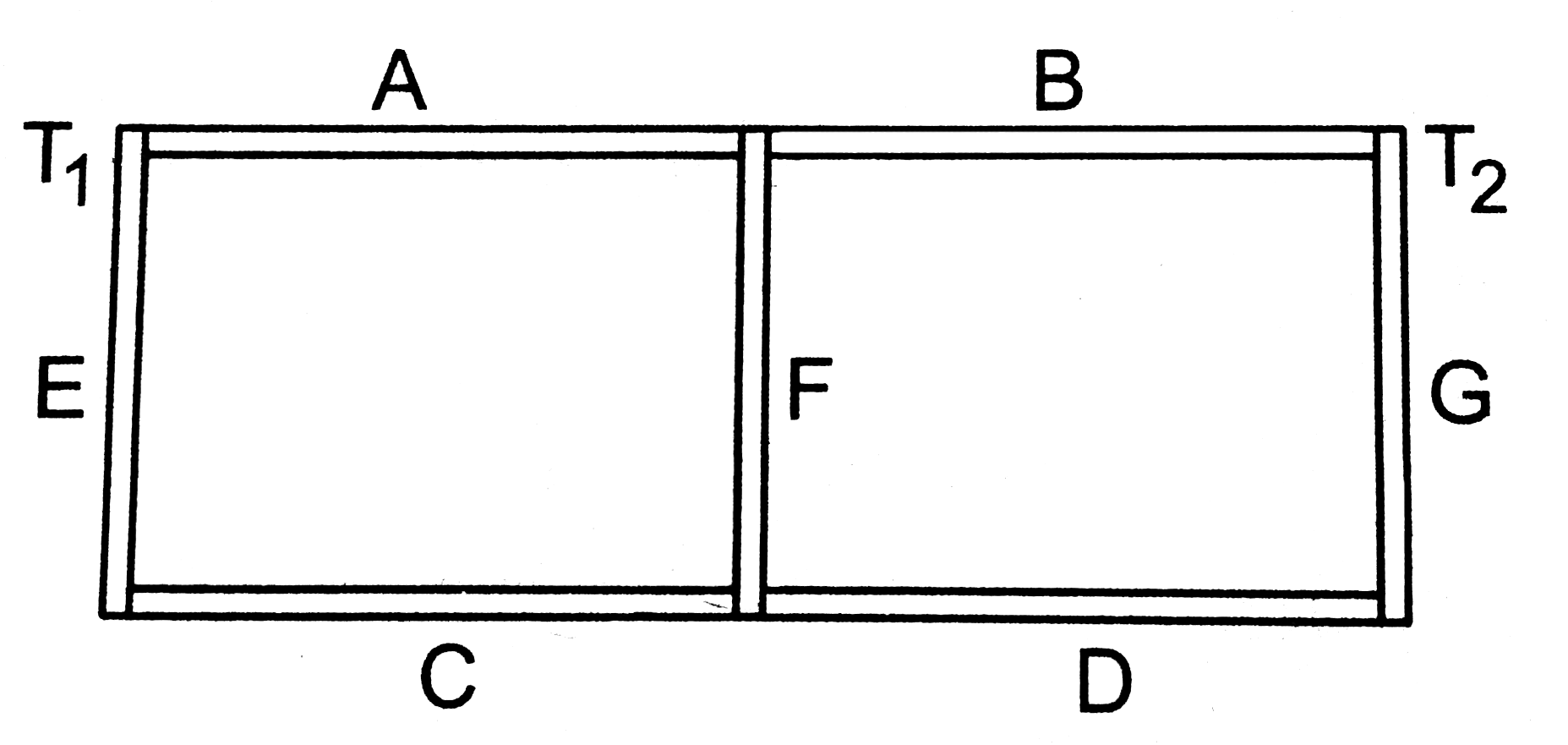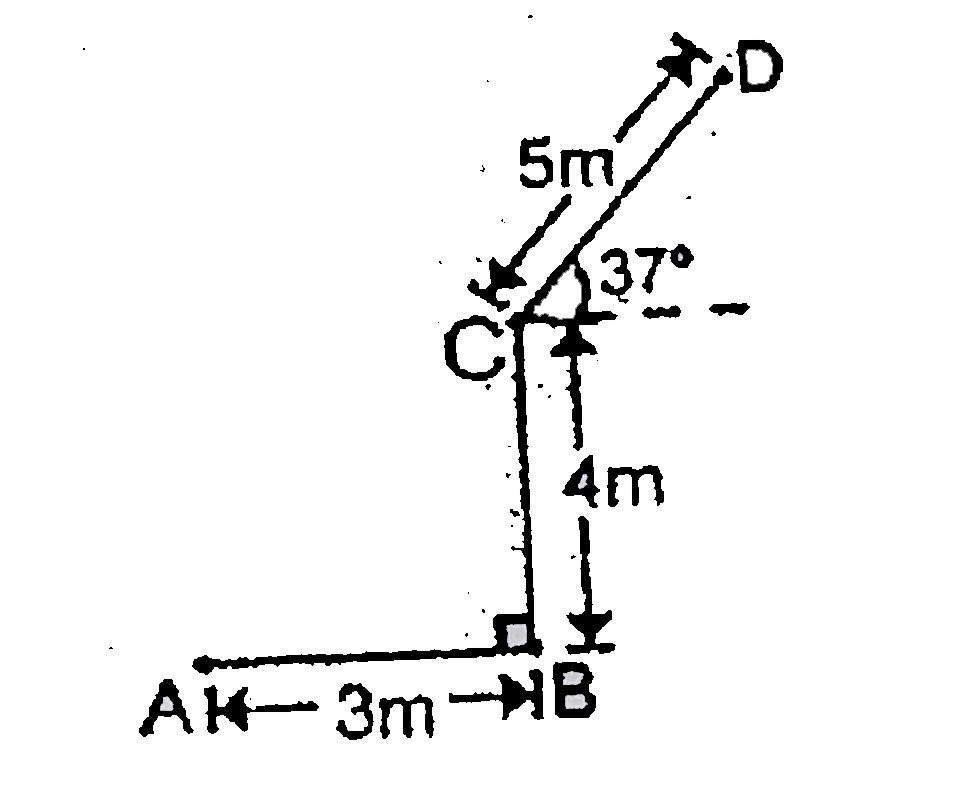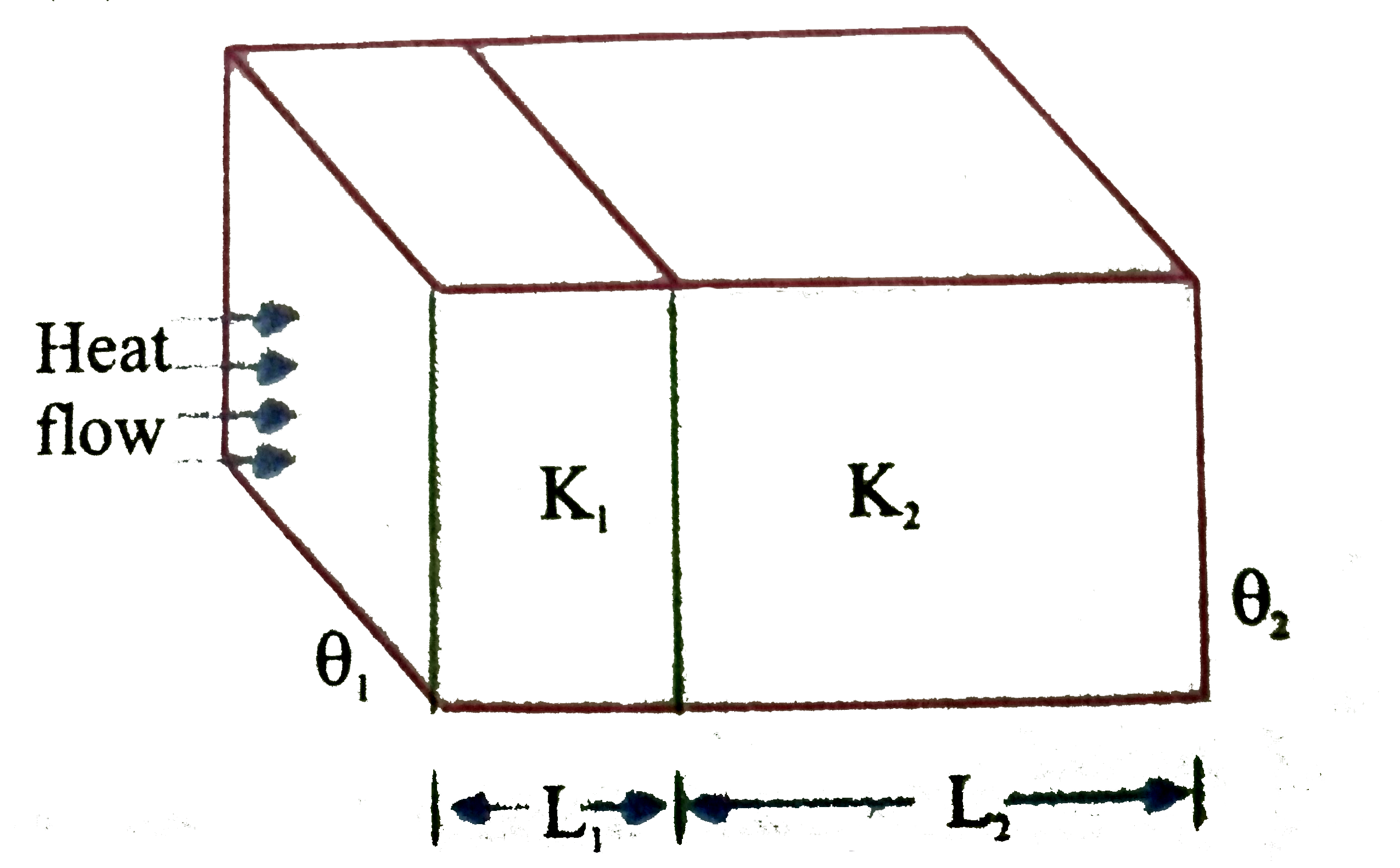The figure shows the cross-section of the outer wall of a house buit in a hill-resort to keep the house insulated from the freezing temperature of outside. The wall consists of teak wood of thickness L1 and brick of thickness (L2=5L1), sandwitching two layers of an unknown material with identical thermal conductivites and thickness. The thermal conductivity of teak wood is K1 and that of brick is (K2=5K). Heat conducion through the wall has reached a steady state with the temperature of three surfaces being known. (T1=25∘C,T2=20∘C and T5=−20∘C). Find the interface temperature T4 and T3.

Let interface area be A. then thermal resistance of wood.
R1=L1K1A and that of brick wall
R2=L2K2A=5L15K1A=R1
Let thermal resistance of the each sand witch layer =R. Then the above wall can be visualised as a circuit

thermal current through each walls is same.
Hence 25−20R1=20−T3R=T3−T4R=T4+20R1
⇒25−20=T4+20⇒T4=−15∘C
also, 20−T3=T3−T4⇒T3=20+T42=2.5∘C
Topper's Solved these Questions
- BOOK - RESONANCECHAPTER - HEAT TRANSFEREXERCISE - Board Level Exercise14videos
HEAT TRANSFER
- BOOK - RESONANCECHAPTER - HEAT TRANSFEREXERCISE - Exercise-11videos
HEAT TRANSFER
- BOOK - RESONANCECHAPTER - HEAT TRANSFEREXERCISE - Advancel Level Problems17videos
HEAT TRANSFER
- BOOK - RESONANCECHAPTER - GRAVITATIONEXERCISE - Exercise21videos
GRAVITATION
- BOOK - RESONANCECHAPTER - KINEMATICSEXERCISE - Exercise65videos
KINEMATICS
Similar Questions
What is the S.I. Unit of thermal conductivity?
02:39View SolutionA uniform slab of dimension 10cm×10cm×1cm is kept between two heat reservoir at temperatures 10∘C and 90∘C The larger surface areas touch the reservoirs. The thermal conductivity of the material is 0.80Wm−1.∘C−1 . Find the amount of heat flowing through the slab per minute.
02:58View SolutionSeven rods A,B,C,D,E,FandG are joined as shown in figure. All the rods have equal cross-sectional area A and length l. The thermal conductivities of the rods are KA=KC=K0, KB=KD=2K0, KE=3K0, KF=4K0 and KG=5K0 . The rod E is kept at a constant temperature T1 and the rod G is kept at a constant temperature T2(T2>T1) . (a) Show that the rod F has a uniform temperature T=(T1+2T2)/3 . (b) Find the rate of heat flowing from the source which maintains the temperature T2 .
 03:25View Solution
03:25View SolutionA point mass m is placed inside a spherical shell of radius R and mass M at a distance R2 form the centre of the shell. The gravitational force exerted by the shell on the point mass is
03:10View SolutionA particle moves along a path ABCD as shown in the figure. Then the magnitude of net displacement of the particle from position A to D is:
 05:29View Solution
05:29View SolutionA composite slab is prepared by pasting two plates of thickness L1 and L2 and thermal conductivites K1 and K2 . The slab have equal cross-sectional area. Find the equivalent conductivity of the composite slab.
02:10View SolutionFigure shows in cross section a wall consisting of four layers with thermal conductivities K_(1) = 0.06 W // mK, K_(3) = 0.04 W// mK and K_(4) = 0.10 W// mK . The layer thickness are L_(1) = 1.5 cm, L_(3) = 2.8 cm and L_(4) = 3.5 cm . The temperature of interfaces is as shown in figure. energy transfer through the wall is in steady state. the temperature of the interface between layer 3 and 4 is:
03:28View SolutionTemperature shows in cross section a wall consisting of four layers with thermal conductivities K_(1)=0.06W//mK,K_(3)=0.04W//mK and K_(4)=0.10W//mK the layer thickness are L_(1)=1.5cm,L_(3)=2.8cm and L_(4)=3.5 cm. The temperature of interfaces is as shown in figure energy transfer through the wall is in steady state. Q. Temperature of outer surface of sphere is
01:59View SolutionTemperature shows in cross section a wall consisting of four layers with thermal conductivities K_(1)=0.06W//mK,K_(3)=0.04W//mK and K_(4)=0.10W//mK the layer thickness are L_(1)=1.5cm,L_(3)=2.8cm and L_(4)=3.5 cm. The temperature of interfaces is as shown in figure energy transfer through the wall is in steady state. Q. Thickness of hollow sphere is
03:14View SolutionTwo plates each of area A thickness L1 and L2 thermal conductivities K1 and K2 respectively are joined to from a single plate of thickness (L1+L2) If the temperatures of the free surfaces are θ1 and θ2 Calculate
(a) Rate of flow of heat
(b) Temperature of interface
 .03:14View Solution
.03:14View SolutionTwo metal plates of same area and thickness l_(1) and l_(2) are arranged in series If the thermal conductivities of the materials of the two plates are K_(1) and K_(2) The thermal conductivity of the combination is .
03:37View SolutionA slab consists of two layers of different materials of the same thickness and having thermal conductivities K_(1) and K_(2) . The equivalent thermal conductivity of the slab is
02:15View SolutionA slab consists of two parallel layers of two different materials of same thickness having thermal conductivities K_(1) and K_(2) . The equivalent conductivity of the combination is
02:43View SolutionA slab consists of two parallel layers of two different materials of same thickness having thermal conductivities K_(1) and K_(2) , the equivalent conductivity of the combination is :
02:46View SolutionA slab consists of two parallel layers of two different materials of same thickness having thermal conductivities k_(1) & k_(2) . The equivalent conductivity of the combination is :
04:28View Solution

